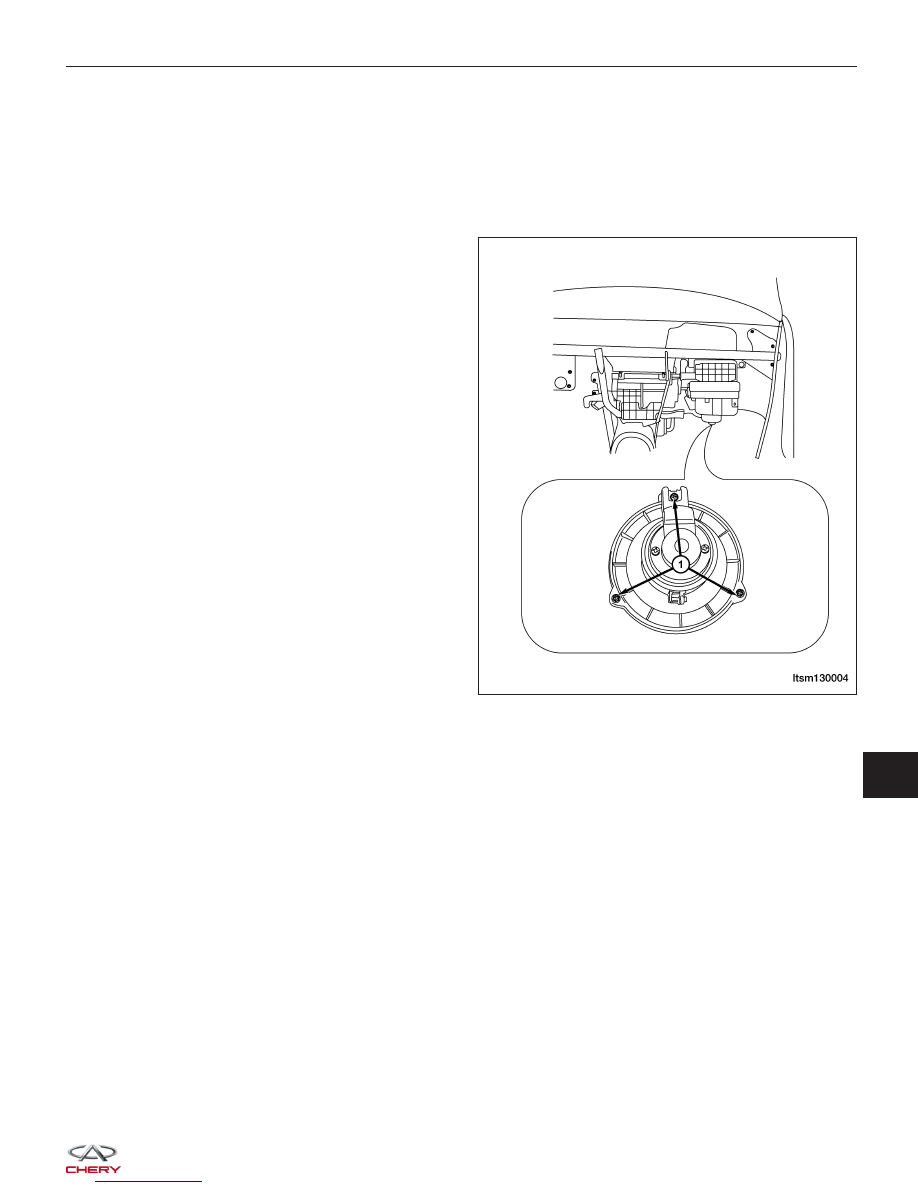Chery Tiggo. Manual - part 379

Removal & Installation
NOTE :
The blower motor is located on the bottom of the HVAC housing. The blower motor can be removed from the vehicle
without having to remove the HVAC housing.
1. Disconnect the blower motor electrical connector.
2. Remove the glove box (See Instrument Panel Removal & Installation in Section 15 Body & Accessories).
3. Remove the mounting bolts (1) for the blower
motor.
4. Remove the blower motor.
5. Installation is in the reverse order of removal.
ON-VEHICLE SERVICE
LTSM130004
13